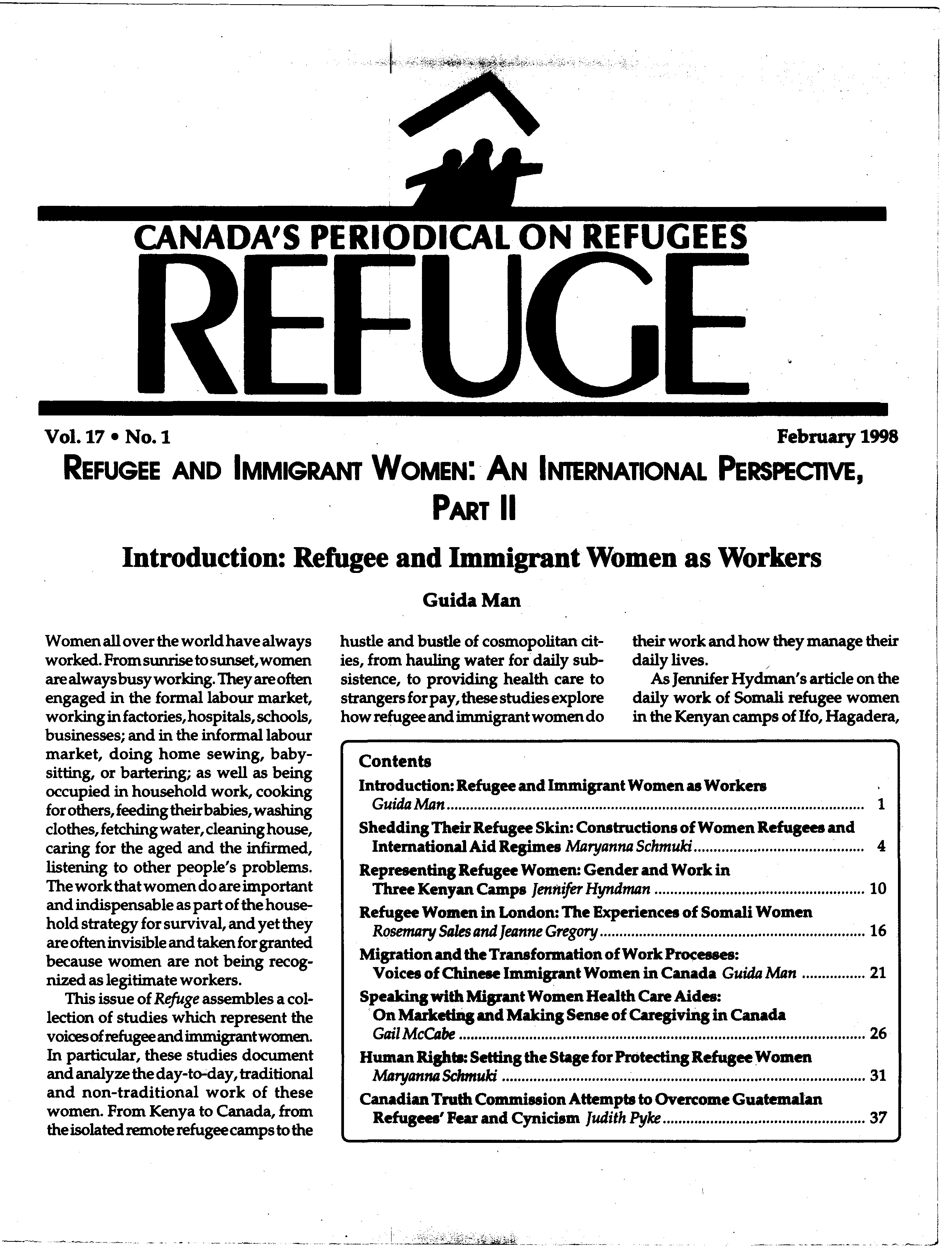Representing Refugee Women: Gender and Work in Three Kenyan Camps
DOI:
https://doi.org/10.25071/1920-7336.21955Keywords:
Kenya, Somali refugees, refugee women, refugee camp, gender, space, labour, local capacity, relief strategiesAbstract
Representations of refugee women as "poor," vulnerable," and "helpless" are often caricatures inattentive to the innovations and survival strategies they employ. Combined with the relatively few images and impressions of refugee women’s experiences available, women relief workers, and scholars have limited understanding of their worlds across time and space. This articles aims to 1) discuss the politics, power relations and problems of representing refugee women; 2) illustrate selected daily routines, concerns and income learning strategies of Somali refugee women in Kenya; and 3) argue that the “local capacity” or indigenous skills of this group have not been fully recognized. Astute humanitarian policy and practice should not only promote “building local capacity” – a term often heard in relief circles today - but it should identify, mobilize and support the kinds of local capacity identified in the Kenyan camps of Ifo, Hagadera and Dagahaley.Metrics
Downloads
Published
How to Cite
Issue
Section
License
Copyright (c) 1998 Jennifer Hyndman

This work is licensed under a Creative Commons Attribution-NonCommercial 4.0 International License.
Refuge authors retain the copyright over their work, and license it to the general public under the Creative Commons Attribution-Non Commercial License International (CC BY-NC 4.0). This license allows for non-commercial use, reproduction and adaption of the material in any medium or format, with proper attribution. For general information on Creative Commons licences, visit the Creative Commons site. For the CC BY-NC 4.0 license, review the human readable summary.







